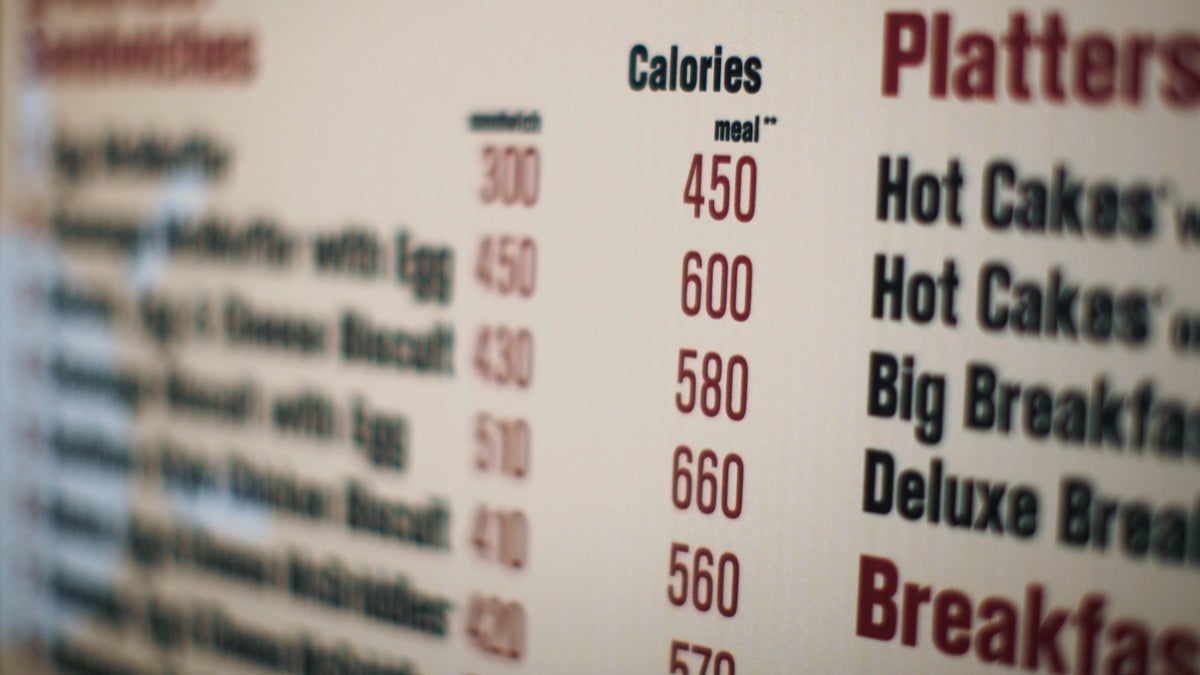Philly taking federal calorie count rules with grain of salt

A McDonalds drive-thru menu printed with calorie counts for each food item (Ed Ou/AP Photo, file)
Chain restaurants in Philadelphia have been posting the calorie content of their food items on their menu boards since 2010. Recent research finds that the info hasn’t done much to change consumer habits – but the calorie counts are here to stay – and will actually expand.
A national calorie labeling law has put the city in a bit of a pickle.
Philadelphia’s menu labeling law passed in 2008. It was one of the local laws that paved the way for creating national guidelines for how much nutritional information restaurants need to provide their customers.
“It’s because of laws like Philadelphia that we were able to build momentum for a national law so Philadelphia was blazing the trail for the national law,” said Margo Wootan of the Center for Science in the Public Interest.
A nationwide requirement that chains post calorie counts goes into effect soon; in the meantime, the city is in a sticky legal situation, according to Giridhar Mallya of the city Department of Public Health.
“We have not been able to enforce the law, because the federal law supersedes our law. We have put a petition into the Food and Drug Administration because our local law not only requires calories like the federal law, but it also requires this additional information,” Mallya said.
The additional information includes sodium and carbohydrate content, which is important for people with certain medical conditions.
It’s also important that the calorie counts are accurate, which can be an expensive and time-consuming process for restaurant inspectors. The best watchdogs for inaccurate information may be other restaurant chains, Wootan said.
“There’s a lot of competition between restaurants that sell similar kinds of foods and, if the numbers were way off, their competitors would notice,” Wootan said.
Industry observers have noticed that many fast-food restaurants have started adapting their menu boards to keep up with these requirements. Many places are using electronic boards that make changing menu displays and calorie count numbers easier, and cheaper.
While being sure that restaurants are providing accurate nutritional information is important, it’s just a first step, Mallya said.
“The second step is making sure customers know that that information is there and that they know how to use it,” he said.
Mallya hopes that launching an educational campaign to help people make sense of calorie count numbers will amplify the effect of posting that information.
Correction: This article was corrected because a previous version wrongly attributed a statement to Giridhar Mallya of the city Department of Public Health.
WHYY is your source for fact-based, in-depth journalism and information. As a nonprofit organization, we rely on financial support from readers like you. Please give today.

